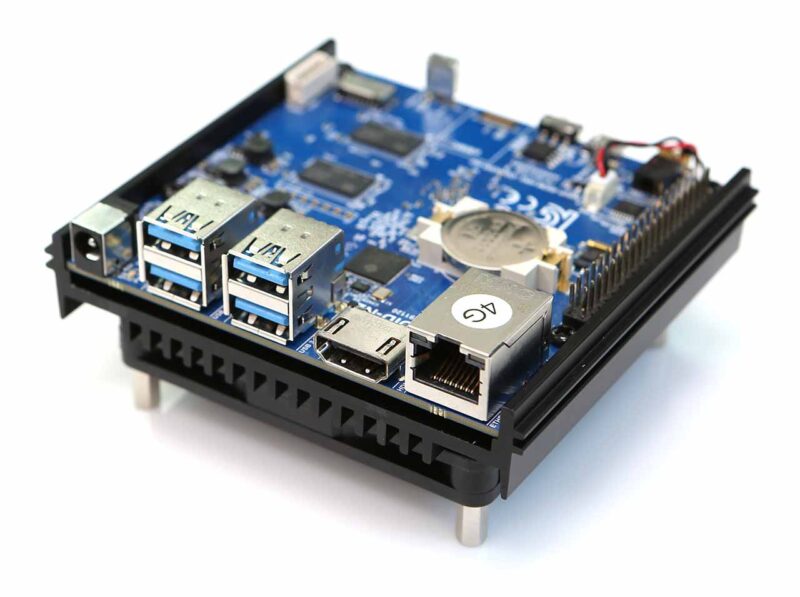ODROID-N2+
This version of the N2 is far faster, stable and powerful than the previous version of the N2. The N2+’s CPU is built around a dual core ARM Cortex-A53 cluster and quad-core CPU ARM Cortex-A73 cluster, all of which are connected to a new generation Mali-G52 GPU.

In part due to the better silicon architecture of the S922X SoC, the A73 cores can run at 2.2GHz (up from 1.8GHz on the N2) without experiencing thermal throttling at typical room temperatures while using the stock metal-housing heatsink, resulting in a durable and silent computer. The CPU’s multi-core performance is approximately 22 percent faster than that of the original N2 processor. The N2+ is equipped with a 1320MHz DDR4 RAM module. The use of a large metal housing heatsink can help to keep CPU and RAM throttling to a bare minimum. To ensure better thermal performance, the CPU is positioned on the board’s underside rather than on the top.

More than 300 ODROID-N2-plus+ boards were tested, and all of them performed flawlessly, resulting in a 33 percent boost in performance over the original N2. A 2.4GHz overclock, on the other hand, is not guaranteed because the SoC is not authorized for that speed.
The use of a cooling fan may be required if the compute load is constant at 2.4GHz clock speed and the ambient temperature is 35°C (95°F) or higher to avoid “throttling” due to the SoC temperature.
Features:
- The Amlogic S922X is powered by four Cortex-A73 processors running at 2.2GHz and two Cortex-A53 processors running at 1.9GHz. 2GB or 4GB 32-bit DDR4 (1320MHz, 2640MT/s) DDR4 (2640MT/s, 1320MHz) 32-bit RAM, and a Mali-G52 graphics processor are included.
- Gigabit Ethernet port RTL8211F with a transfer rate of 1Gbps
- HDMI 2.1 port supporting 4K@60Hz with HDR, CEC, and EDID.
- Audio and composite video 384Khz/32bit are converted to digital to analog converter (DAC).
- 4x USB 3.0 host ports (with an average transfer rate of 340MB/s) with SPDIF audio via a 40-pin GPIO connector
- On a micro USB cord, there is a USB 2.0 OTG port (no power)
- Incorporated are a fan connector and a serial console interface.
- GPIO interface header with 40 pins for general purpose IO
- It is recommended to use a 12V/2A adaptor; power usage ranges from 1.8 watts at rest to 5.5 watts when under pressure (up to 25W)
- The Android 9 Pie BSPs and Ubuntu 18.04 LTS are the recommended operating systems for this device.
Who should be interested in this board?
People who want to produce Odroid-N2+ programs, games, or other material should consider purchasing the developer edition instead. A debugging board, source code, and schematics are included for developers to incorporate into their projects.
What should users know about it?
Pros:
- It’s straightforward to get it started.
- High speed
- Stable
- Powerful
Cons:
- There is an issue with the HDMI signal.
- You’ll need some form of cooling system if you want to avoid CPU throttling.
THE BOTTOM LINE
The new ODROID-N2 has a maximum speed of 2.2 GHz, 22 percent quicker than the previous model’s maximum speed of 1.8 GHz. It’s easy to set up, and you can enjoy its high speed.
